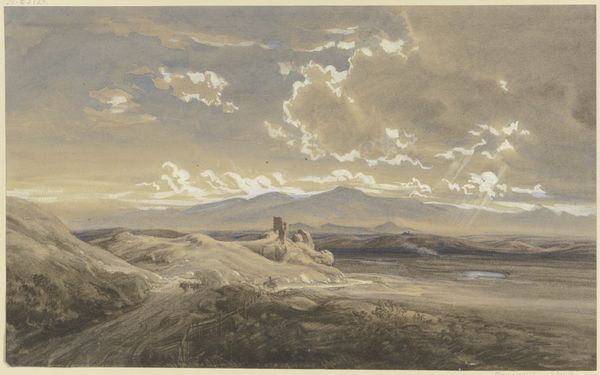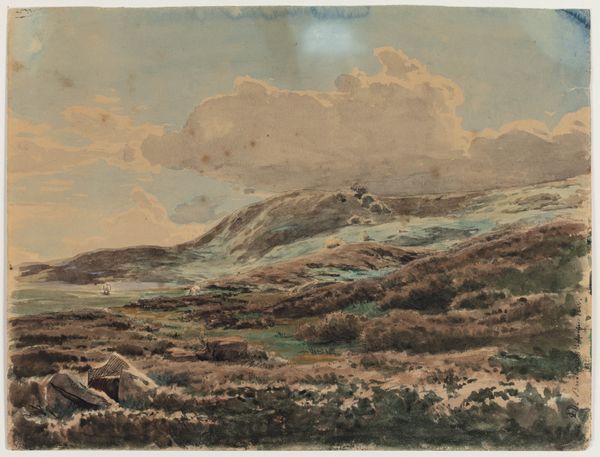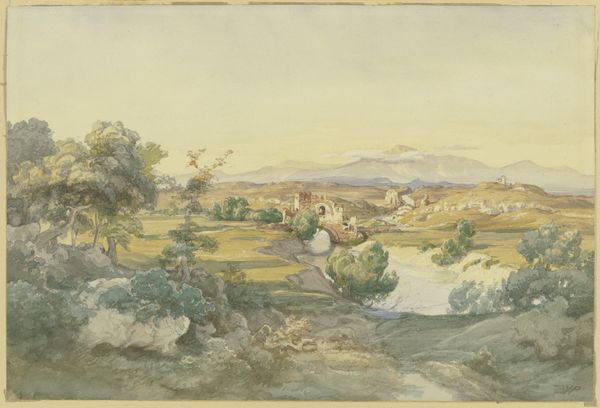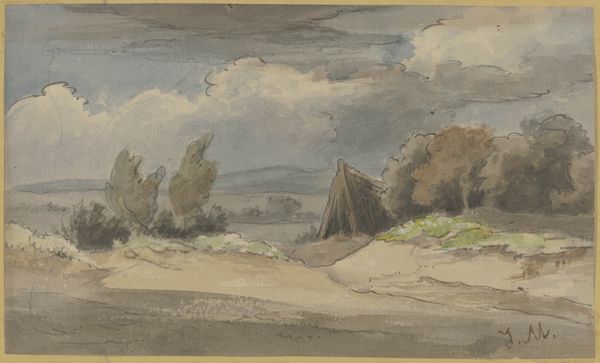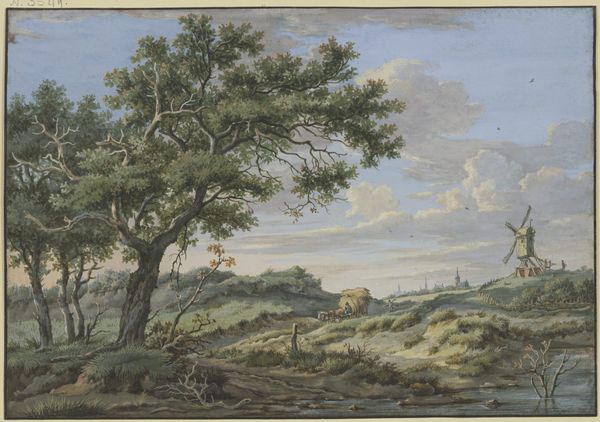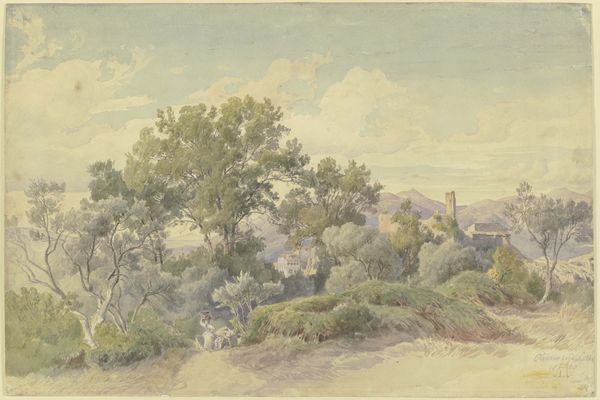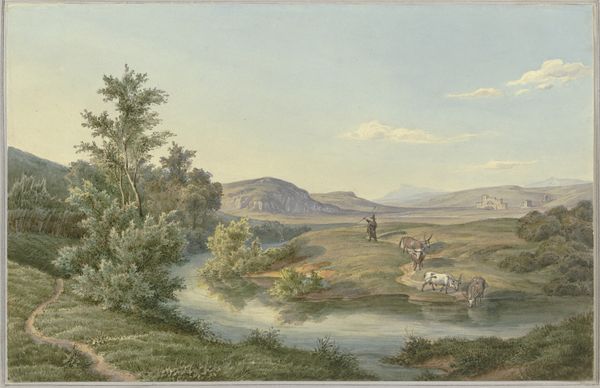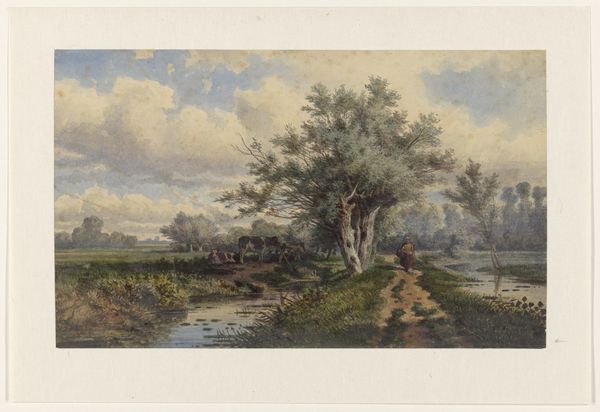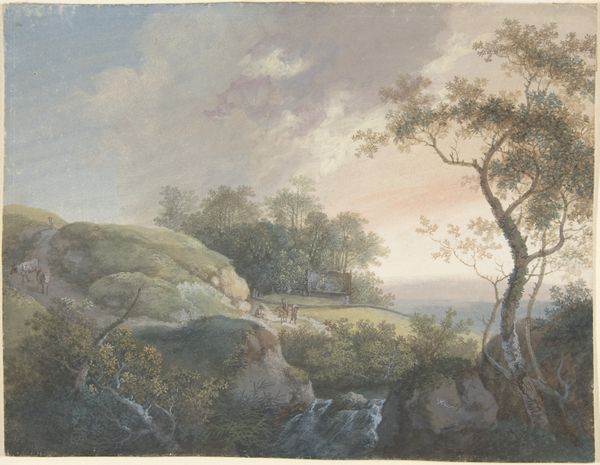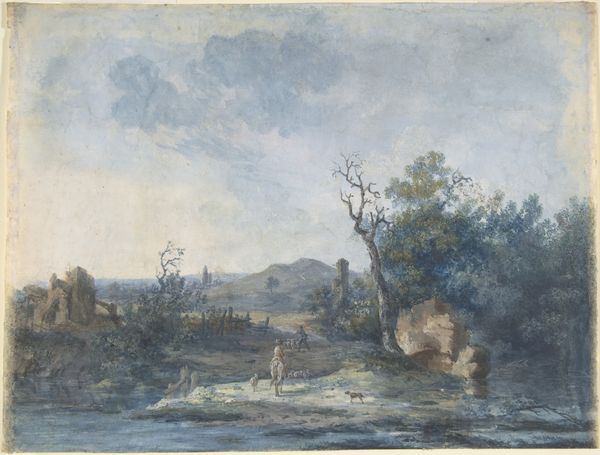
Copyright: Public Domain
Eduard Wilhelm Pose painted this Italian landscape, with its ancient aqueducts, in watercolor. It reflects a cultural fascination of the nineteenth century with the Italian countryside. Picturesque views of Italy, like this one, satisfied a growing demand among northern Europeans, particularly the Germans and the British, for images of the classical world. Tourism grew with the expansion of railways, and popular interest in landscape fed a commercial market for views such as this one. This romantic vision of Italy also expressed the cultural and political values of the German states. Looking to Italy for a sense of cultural identity and historical continuity, German artists and intellectuals sought to define and legitimize their own national aspirations. Understanding this artwork requires that we situate it within the social and institutional contexts that gave rise to it. Only by consulting a broad range of historical resources can we understand the complex ways that art and society interact.
Comments
No comments
Be the first to comment and join the conversation on the ultimate creative platform.
